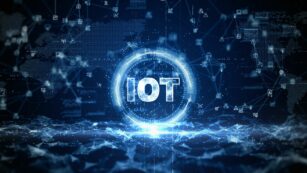The Industrial Internet of Things (IIoT) is revolutionizing the business landscape, driving a new wave of efficiency and productivity. But what does this buzzword really mean, and what are its practical implications? In this article, we’ll delve into real-world examples of IIoT in action, showcasing how it’s transforming industries and redefining the future of work.
From smart factories to connected logistics, IIoT is not just a concept—it’s a game-changing reality. When integrated with business process automation, it empowers organizations to automate complex workflows, streamline operations, and maximize productivity across various industries. It’s bridging the gap between digital and physical worlds, enabling unprecedented levels of automation and connectivity.
Industrial Internet Of Things Examples
 Renewal Energy generation employs IIoT, where devices monitor and control renewable energy sources. For example, windmills become more efficient through real-time adjustments based on wind velocity. Manufacturing likewise utilizes IIoT. It’s exemplified by predictive maintenance where critical equipment is monitored, and upcoming faults are predicted ahead of time, thus reducing costly downtime.
Renewal Energy generation employs IIoT, where devices monitor and control renewable energy sources. For example, windmills become more efficient through real-time adjustments based on wind velocity. Manufacturing likewise utilizes IIoT. It’s exemplified by predictive maintenance where critical equipment is monitored, and upcoming faults are predicted ahead of time, thus reducing costly downtime.
In Agriculture, IIoT is exhibited through precision farming, providing real-time weather updates, crop monitoring, and automated irrigation. Logistics also leverage IIoT. An apt example is fleet tracking, facilitating better route planning and load allocation through real-time tracking and data analysis.
Each example demonstrates IIoT’s capability to enhance proficiency and innovation, reinforcing its significance in diverse industries. They manifest how IIoT merges digital and physical dimensions to foster automation and connectivity, steadily revolutionizing the industrial sphere.
Key Industries Transformed by IIoT
From the assembly lines of factories to the vast acreages of farmland, the industrial Internet of Things (IIoT) continues its transformative streak. Let’s delve deeper into its other applications – manufacturing automation, smart agriculture, and energy management.
 Manufacturing Automation
Manufacturing Automation
Manufacturing industries adopt IIoT applications, spawning significant advancements in automation. Production processes witness a radical overhaul, replacing manual labor with automated equipment. IIoT introduces real-time monitoring for these industrial machines, providing valuable insights into operating conditions and performance. An illustrative instance is General Electric’s Brilliant Factory that employs IIoT, thus enhancing operational efficiency and mitigating unexpected downtimes.
Smart Agriculture
IIoT proves instrumental in pioneering the smart agriculture industry too. Precision farming finds traction, utilizing IIoT for actionable data to optimize usage of water, fertilizer, and seeds. An example in this regard is John Deere’s Agri Services, leveraging IIoT to provide detailed soil and weather reports, thereby enabling farmers to customize their farming practices.
Energy Management
 Lastly, the realm of energy management draws immense value from IIoT. It helps companies to monitor and control energy consumption levels, promoting environmentally-friendly practices as a bonus. An example is the innovator company, Schneider Electric*, employing IIoT to deliver real-time data on energy consumption, making it easier for businesses to strategize and execute energy-saving measures.
Lastly, the realm of energy management draws immense value from IIoT. It helps companies to monitor and control energy consumption levels, promoting environmentally-friendly practices as a bonus. An example is the innovator company, Schneider Electric*, employing IIoT to deliver real-time data on energy consumption, making it easier for businesses to strategize and execute energy-saving measures.
In essence, the industrial Internet of Things silhouettes a welcome change across key sectors, broadcasting a future dominated by digital convergence and automation. It’s essential for modern industries to embrace these IIoT applications, as they usher tangible enhancements in productivity, efficiency, and sustainability.
*Sources: Schneider Electric official website, GE Digital official website, John Deere official website.
Real-World Examples of IIoT
Capitalizing on the impactful potential of IIoT, diverse industries present concrete examples of its application. An instance surfaces in Predictive Maintenance, where it imparts game-changing possibilities. Industries harness IIoT devices to capture machinery data, process it, and predict potential failures. Notably, General Electric often utilizes this approach to monitor and maintain their jet engines, effectively reducing unplanned downtime.
Another exemplary usage of IIoT is in Fleet Management. Logistics companies, like FedEx, often employ IIoT technology to monitor the condition of their vehicles in real-time. This allows them to optimize routes, manage fuel consumption, and enhance overall operational efficiency.
Intriguingly, Smart Grids represent another prime example of IIoTs real-world application. Power companies leverage IIoT for real-time, end-to-end visibility of power distribution networks. Notably, Duke Energy has been at the forefront, using IIoT to optimize power grids, thereby reducing energy wastage.
Over the years, IIoT’s integration in diverse sectors has consistently manifested in increased efficiency, productivity, and sustainability. The mentioned industrial internet of things examples merely shine a light on the expansive landscape of opportunities yet to be explored.

